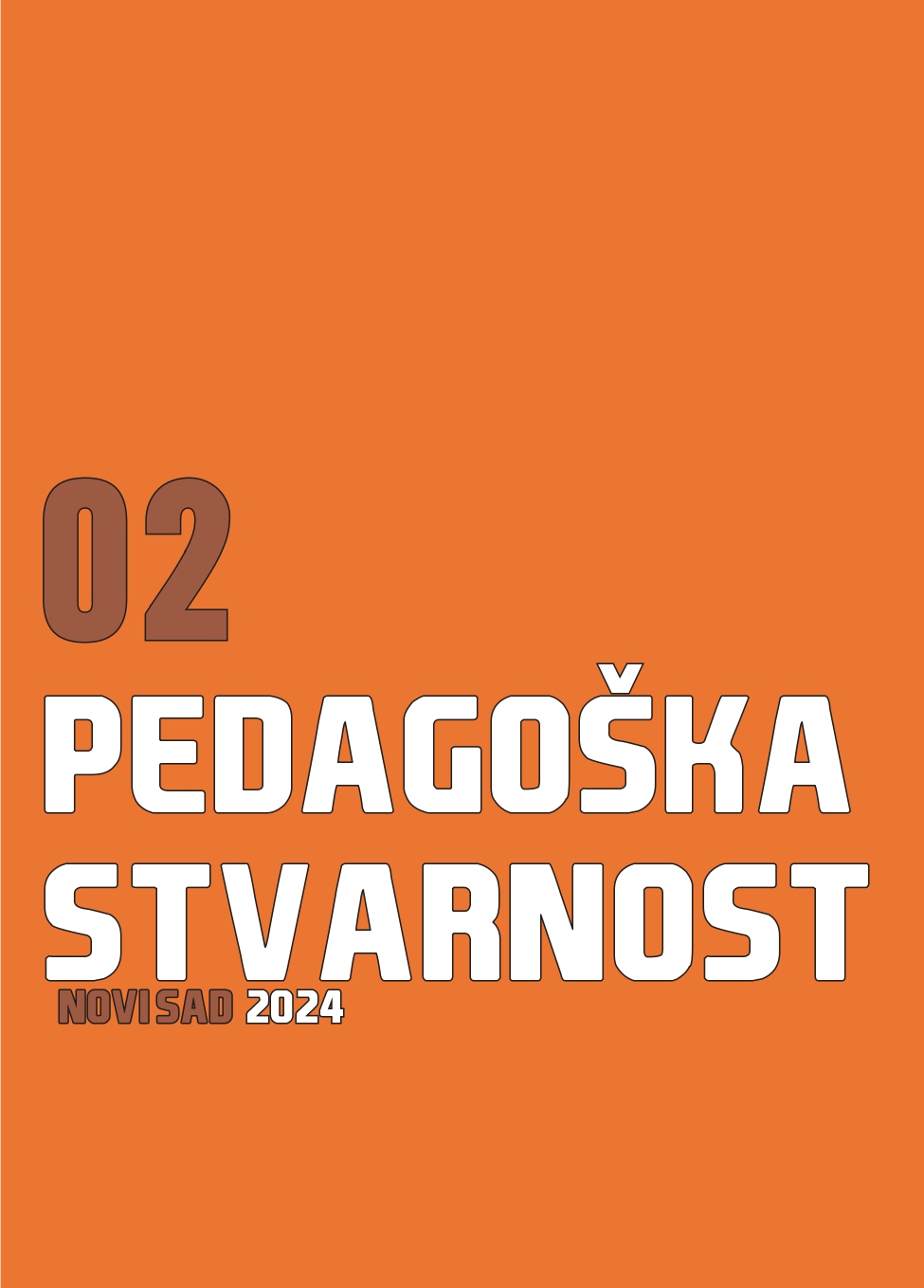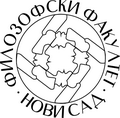PRAGMATSKE I KOMUNIKACIONE SPOSOBNOSTI DECE PREDŠKOLSKOG UZRASTA
Originalni naučni rad
Apstrakt
Na našim prostorima se najveći broj istraživanja bavi strukturalnim aspektima jezika i pragmatskim sposobnostima kod dece tipične populacije. Pragmatika se smatra aspektom jezika koji se poslednji razvija i veoma je međuzavisna od ostalih aspekata jezika. Cilj istraživanja je da istaknemo razliku u pragmatskim, komunikacionim sposobnostima i ostalim strukturalnim aspektima jezika u odnosu na pol i u odnosu na uzrast. Istraživanje je koncipirano kao studija preseka. Istraživanje je sprovedeno u predškolskoj ustanovi “Pčelica” u Sremskoj Mitrovici, a upitnici su bili distribuirani i putem društvenih mreža. Saglasnost za istraživanje dobijeno je od direktora predškolske ustanove u Sremskoj Mitrovici. Takođe, saglasnost za sprovođenje istraživanja dobijeno je i od Etičke komisije Medicinskog fakulteta u Novom Sadu. Uzorak je činilo 103 ispitanika. ANOVA testom testirane su uzrasne razlike u pragmatskim sposobnostima i strukturalnim aspektima jezika. Rezultati pokazuju da postoje značajne uzrasne razlike, takve da u odnosu na strukturalne sposobnosti uočavamo razlike između sve tri grupe. Što su deca starija to pokazuju bolje rezultate kada su u pitanju strukturalni aspekti jezika. Kada su pragmatske sposobnosti u pitanju razlika je statistički značajna samo između dece od šest godina i mlađih grupa. Između dece od četiri i pet godina nisu uočene razlike u pragmatskim sposobnostima. Što se tiče polnih razlika, dečaci su ostvarili bolje rezultate i kada su u pitanju pragmatske i komunikacione sposobnosti i ostali strukturalni aspekti jezika, ali ta razlika nije bila statistički značajna.
Reference
Adams., C. (2001). Clinical diagnostic and intervention studies of children with semantic-pragmatic language disorder. International Journal of Language Communication Disorders, 36(3):289-305.
Adams., C, Clarke., E., Haynes., R. (2009). Inference and sentence comprehension in children with specific or pragmatic language impairments. International Journal of Language & Communication Disorders, 44(3):301-318.
Baucal, A. (2012). Standardi za razvoj i učenje dece ranih uzrasta u Srbiji. Beograd: Institut za psihologiju Filozofskog fakulteta Univerziteta u Beogradu, UNICEF Srbija, 49-66.
Beuker., K., Rommelse., N., Donders., R., Buitelaar., J. (2013). Development of early communication skills in the first two years of life: infant behavior and development, 36:71-83.
Blain-Brière, B., Bouchard, C., & Bigras, N. (2014). The role of executive functions in the pragmatic skills of children ages 4–5. Frontiers in Psychology, 5, 81239.
Bisho., DM. (2015). Ten questions about terminology for children with unexplained language problems. International Journal of Language & Communication Disorders, 49(4).
Bouchard., C., Sylvestre., A., Forget-Dubois., N. (2020). Why are boys perceived as less prosocial than girls by their early childhood educators? The role of pragmatic skills in preschool and kindergarten children. Educational Psychology, 40(10):1-21.
Brojčin., B., Đorđević., M., Milačić-Vidojević., I. (2016). Pragmatske veštine dece i mladih sa lakom intelektualnom ometenošću. Specijalna edukacija i rehabilitacija, 15(2).
Buđevac., N., Anđelković., D., Savić M. (2009). Deca pitaju ali ne znaju kako da postave pitanje-epi pragmatski i meta-pragmatski razvoj. Univerzitet u Beogradu. Filozofski fakultet; Laboratorija za eksperimentalnu psihologiju. Srbija, 42(1), 121-138.
Carril., A., Perez-Pereira., M. (2019). Pragmatic abilities in children with ASD, ADH, Down syndrome, and typical development through the Galician version of the CCC-2. Revista de Logopedia, Foniatria y Audiologia, 39(3):105-114.
Cheung., S, Elliott., J. (2017). Child shyness and peer likeability: The moderating role of pragmatics and vocabulary. British Journal of Developmental Psychology, 35(4):531–45.
De Stefani, E., & De Marco, D. (2019). Language, gesture, and emotional communication: An embodied view of social interaction. Frontiers in Psychology, 10, 465649.
Drljan, B. (2022). Jezički poremećaji kod dece. Beograd: Društvo defektologa Srbije.
Gözüm, A. İ. C., & Aktulun, Ö. U. (2021). Relationship between Pre-Schoolers’ self-regulation, language, and early academic skills: The mediating role of self-regulation and moderating role of gender. Current Psychology, 40(10), 4718–4740. doi:10.1007/s12144-021-01699-3.
Golubović., Š, Slavković., S. (2018). Kako roditelji procenjuju razvoj svoje dece? PONS Med Č, 15(1):13-20.
Ivašac., J., Gaćina., A. (2006). Postoji li pragmatički jezični poremećaj? Hrvatska revija za rehabilitacijska istraživanja, 42(2):15-29.
Kovačević, M., Kraljević, J., Cepanec, M. (2006). Sex differences in lexical and grammatical development in Croatian. Proceedings from the First European Network Meeting on the Communicative Development Inventories, 5-15. Dubrovnik, Croatia.
Matthews, D., Biney, H., & Abbot-Smith, K. (2018). Individual Differences in Children’s Pragmatic Ability: A Review of Associations with Formal Language, Social Cognition, and Executive Functions. Language Learning and Development, 14(3), 186–223. doi:10.1080/15475441.2018.1455584.
Pham, T., Joanisse, M. F., Ph.D., Ansari, D., Oram Cardy, J., Stager, C., & Archibald, L. M. (2022). Early cognitive predictors of language, reading, and mathematics outcomes in the primary grades. https://doi.org/10.31234/osf.io/w23hs.
Pronina, M., Prieto, P., Bischetti, L., & Bambini, V. (2023). Expressive pragmatics and prosody in young preschoolers are more closely related to structural language than to mentalizing. Language Learning and Development, 19(3), 323-344.
Purpura, D. J., & Reid, E. E. (2016). Mathematics and language: Individual and group differences in mathematical language skills in young children. Early Childhood Research Quarterly, 36, 259– 268. https://doi.org/10.1016/j.ecresq.2015.12.020.
Tarawneh, R. T. (2023). Exploring the Impact of Pragmatic Competence on the Communicative Competence. Journal of Namibian Studies: History Politics Culture, 33, 28-42.
Urm, A., & Tulviste, T. (2016). Sources of individual variation in Estonian toddlers’ expressive vocabulary. First Language, 36(6), 580-600.







